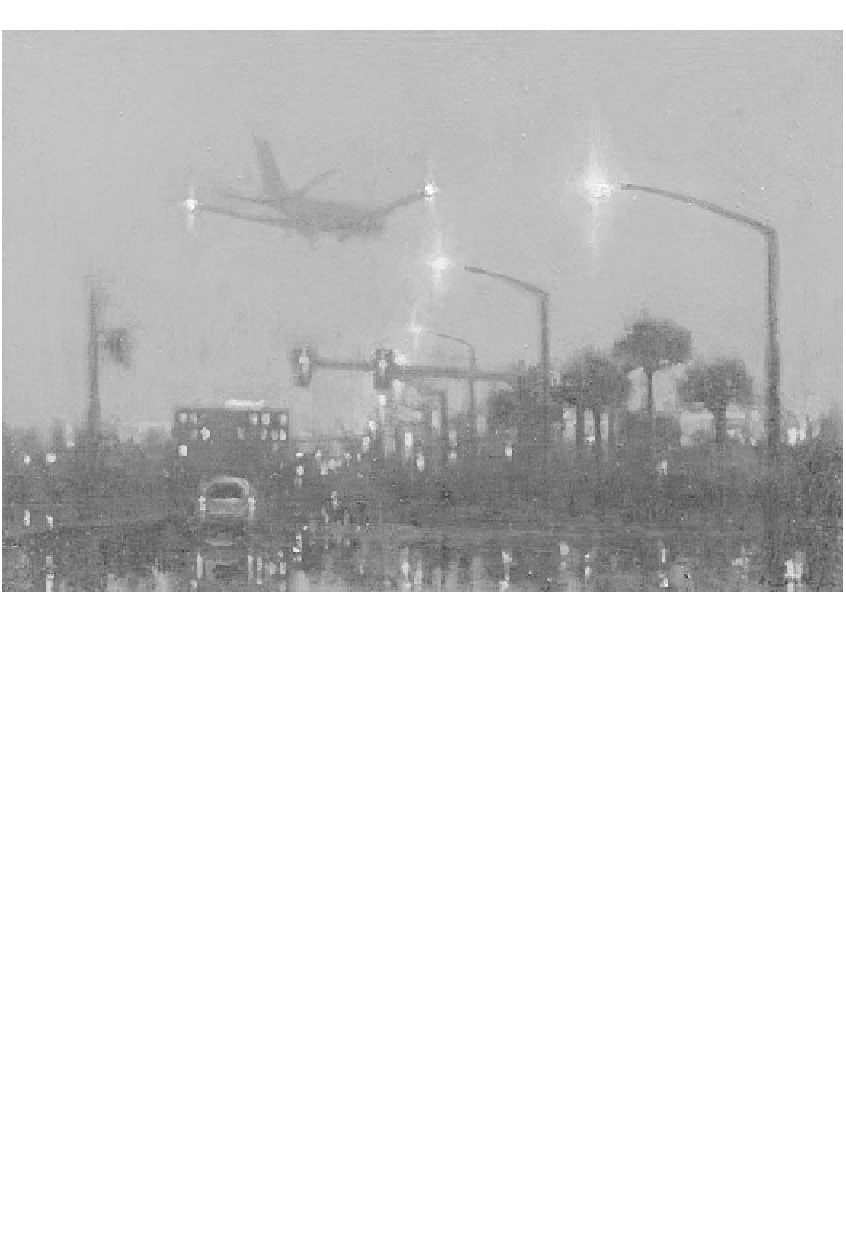Environmental Engineering Reference
In-Depth Information
Figure 8.9
Sunday. 7 Across: Stationery
, 2004 (oil on card). Of course, some problems remain - our
international flying and freight patterns need to be seriously reconsidered. Solving the surface-
based transport CO2 emission problem is of little use if long-distance travel is not managed in
some way. Yet demand management in air travel remains beyond the political debate. Perhaps
an individual carbon rationing system will be required here (Hillman and Fawcett, 2004).
Source
: McLaughlin, Ben (contemporary artist)/Private collection/Wilson Stephens Fine Art, London/The Bridgeman Art
Library.
migrants that keep travel distances as short as possible. Peripheral sprawl needs to be
discouraged, and limited, as it uses valuable agricultural land, it increases the distances that
need to be travelled, and makes the provision of public transport more difficult. The arguments
for high urban densities are strong for both transport and land take reasons, and all cities
should be encouraged to build upwards (higher densities) and not outwards (suburban sprawl)
(Glaeser, 2011), but of course there needs to be a good integration with transport provision.
There are various spatial forms that can be taken up, with point, linear and dispersed
variants. First, the classic city form is a monocentric structure with a radial pattern of transport
links into the centre, where most of the jobs are located (e.g. Oxford, Cambridge). Densities
are highest in the centre and the system can support both public transport and non-motorised
transport, as distances are relatively short. As cities grow larger, more complex structures are
needed (London, Paris, New York and Jakarta). Second, polycentric cities have several centres
and develop a hierarchy of functions that can result in more local activities being carried out
at the smaller centres, and higher function activities in the major centre (Rio de Janeiro and
Mexico City). Oxfordshire, and perhaps even Delhi, match up to the polycentric pattern, albeit
in Oxfordshire's case, in a more spatially disperse format at the regional level, with lots of
open space. Non-motorised modes can be important at the local level, but a high-quality public

